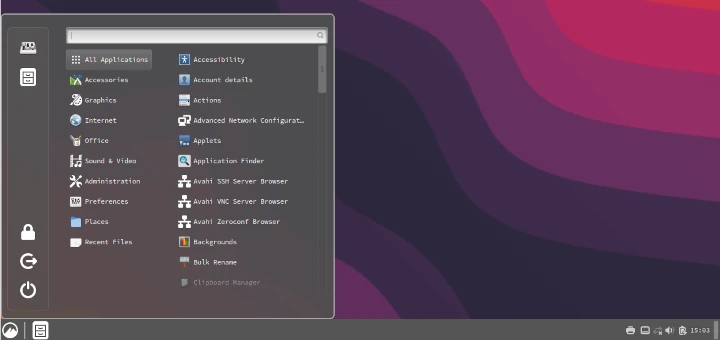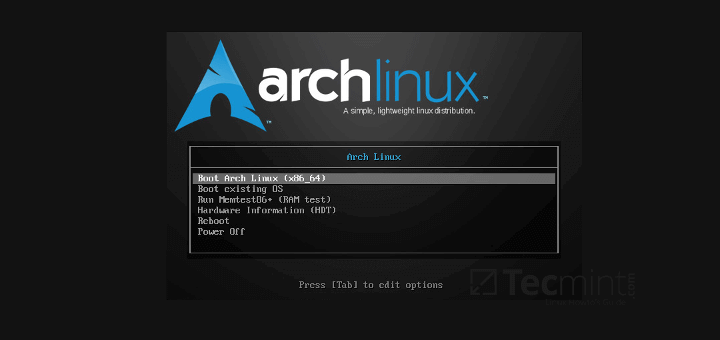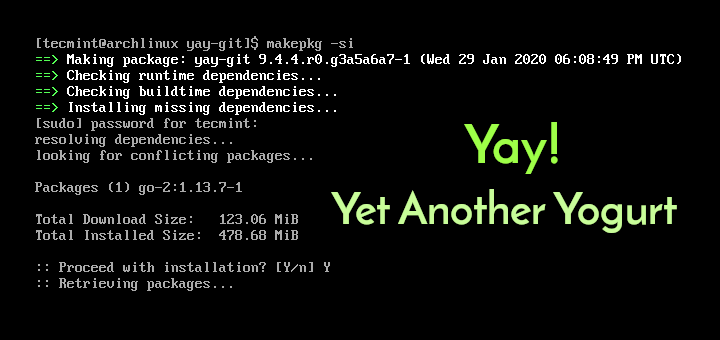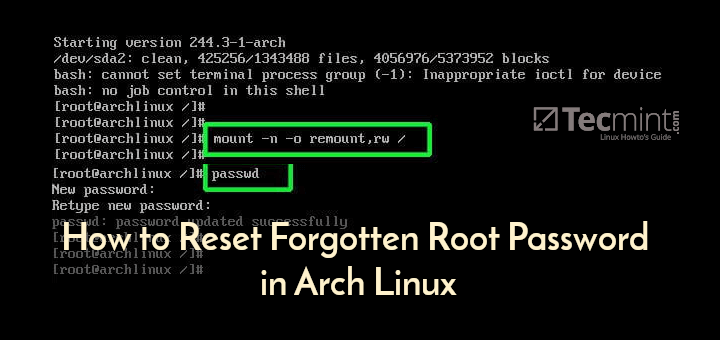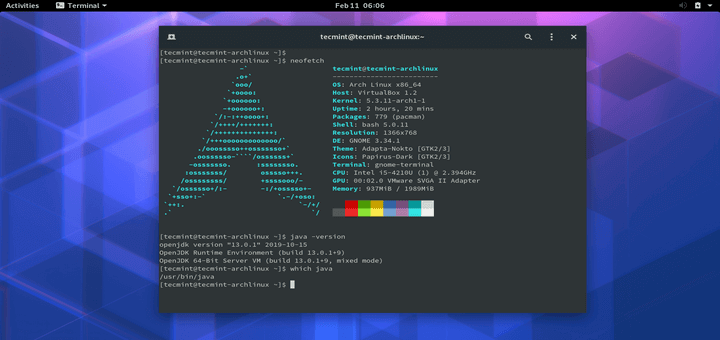If you’re an avid Linux user you probably know by now that it is no Operating System for the weak at heart (well sometimes). The chances of you getting crushed when trying to install a Linux-based Operating System or learning the usual curves in your first week are pretty high.
On the other hand, if you’re starting your trip into the world of Linux you will probably be using one of the mainstream distros out there – Ubuntu and Linux Mint, for example.
Yes, these are excellent distro choices as is suggested by the Google results of the typical keyword search, but if you are explorative enough, you would have already started craving for something that is radically different from what the mainstream has to offer and this is when Arch Linux comes to the rescue.
Arch Linux is a lightweight rolling release Linux distribution for x86-64 architecture-based computers. It is open-source and contains both libre and proprietary software because of its flexibility-based philosophy. As much loved as Arch Linux is, word on the blog streets is that it has a steep learning curve and new users end up searching for derivatives that are less developer-centric or switch to trying out a different Linux distro line completely.
If you want to give Arch Linux a try or are in the mood of enjoying the Arch Linux experience from a different angle here is a list of the 10 best Arch-based distros to check out.
1. Manjaro
Manjaro today stands out as one of the main Arch-based distributions essentially because it has an active development team with a large user base and community with the added advantage of being one of the very first distros to go with an Arch – which of course means it has been around longer than the rest.
Manjaro is yet another user-friendly Arch-Linux-based distro that completely revamps the whole idea of Arch – but most importantly lends an easier and more intuitive approach to Arch Linux for newcomers.
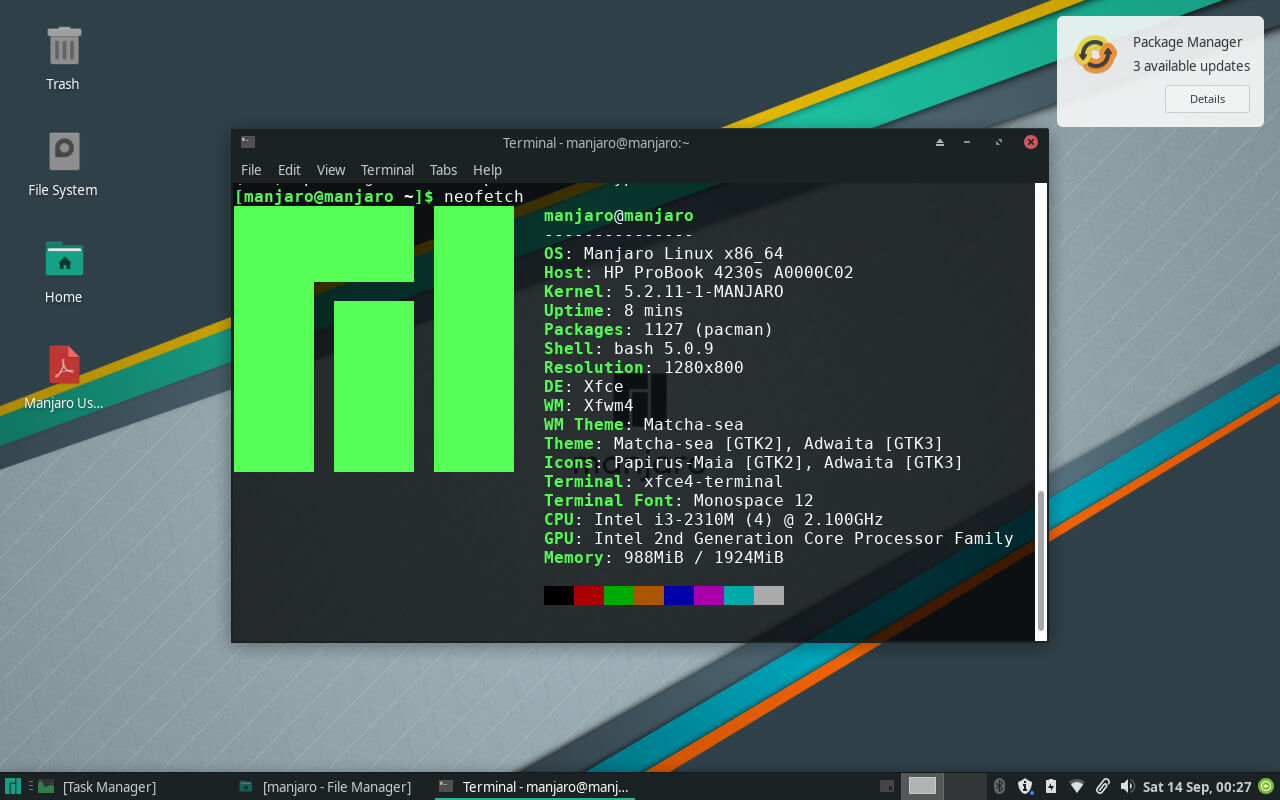
Manjaro is available in the listed flavors below with the Xfce and KDE variants being the officially supported bases.
- XFCE
- KDE
- E17
- Cinnamon/Gnome
- Fluxbox
- KDE/Razor-qt (a Manjaro Turkey project)
- LXDE
- Enlightenment
- Netbook
- LXQT
- PekWM
Choose your preferred Manjaro edition from the official website here: Download Manjaro Linux OS and do a fresh Manjaro installation on your system.
2. ArcoLinux
ArcoLinux (formerly ArchMerge) is an Arch Linux-based distro that enables users to run Linux in several ways using any of its 3 release branches:
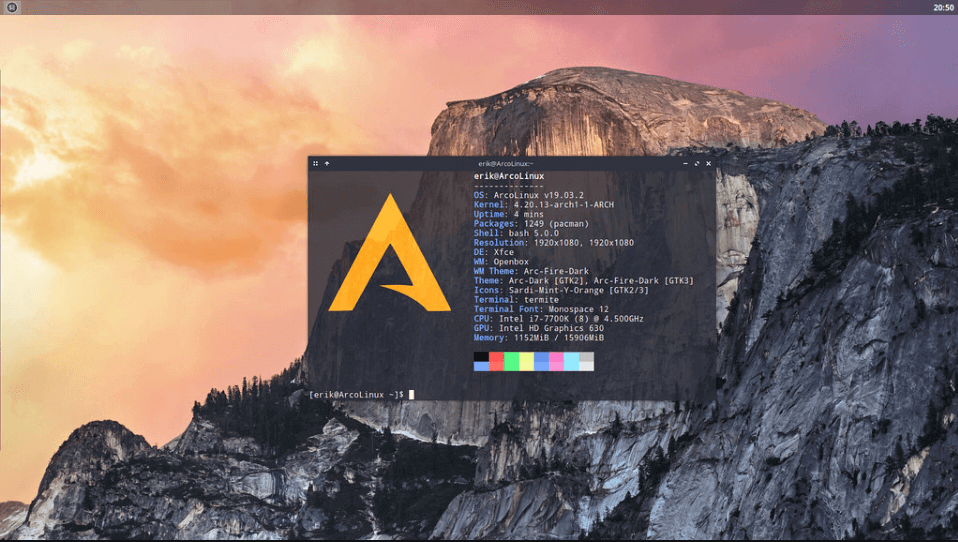
- ArcoLinux: a full-featured OS with Xfce as its desktop manager.
- ArcoLinuxD: a minimal OS that allows users to install any desktop environment and application with a built-in script.
- ArcoLinuxB: a project that allows users to build and customize unique versions of the OS using pre-configured desktop environments, etc. This is what has birthed several community-driven derivatives.
- ArcoLinuxB Xtended: a project that further extends the flexibility of ArcoLinuxB to enable users to experiment more with Tiling Window Managers and other software.
ArcoLinux is free, open-source, and available to download from here: Download ArcoLinux.
3. Chakra – Discontinued
Chakra is a user-friendly Arch Linux-based distribution with a focus on KDE and Qt software to encourage the use of KDE/Qt as a replacement for other widget toolkits.
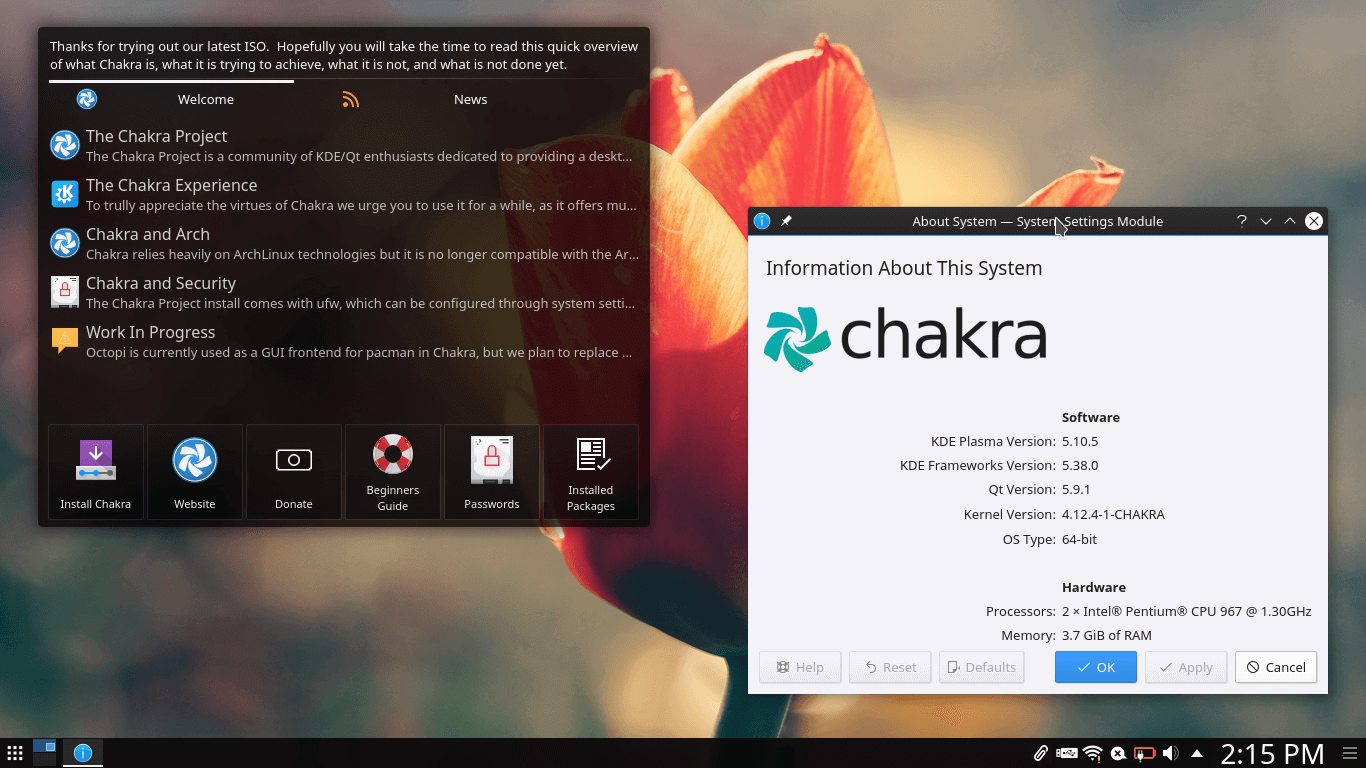
Although it is based on Arch Linux, it classifies as a half-rolling release because it allows users to install their favorite applications and updates from its Arch-based system core while enjoying the latest version of the Plasma desktop environment.
4. Anarchy Linux
Anarchy Linux is a free and open-source project that exists to enable interested Arch Linux users to enjoy all the best of the distro without the hassle that typically comes with it – especially during the installation phase. It does this by shipping with several automated scripts that facilitate its easy setup using Arch’s package base while featuring a custom repository with additional packages.
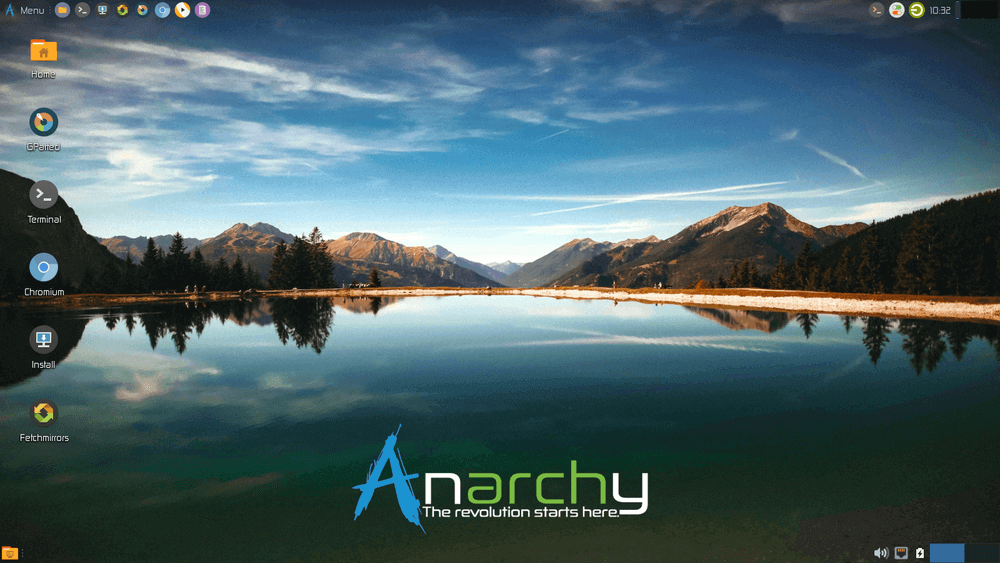
Anarchy Linux is distributed as an ISO that can run off a pen drive, uses Xfce 4 as its default desktop environment, and its users benefit from all the goodies of the AUR.
The latest version of Anarchy Linux ISO images are available on its official website here: Download Anarchy Linux.
5. ArchBang
ArchBang is a minimalized, general-purpose live Linux distribution based on Arch Linux. It is a rolling release under the GNU General Public License, ships with Pacman as the default package manager, and OpenBox as the window manager.
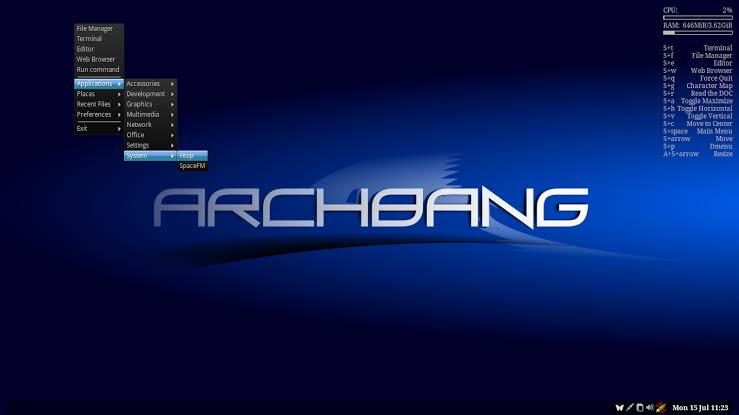
ArchBang has been around for a while now and is still in active development where it is built to run Standard Systemd with speed and stability especially even on low-end hardware.
You can grab the latest ArchBang Linux iso images here: Download ArchBang Linux.
6. Bluestar Linux
Bluestar Linux is an independent Arch Linux-based distribution that focused on creating a tightly integrated rolling and transparent distro for modern desktops. It follows innovations and ships the latest updates for the Plasma Desktop.
Bluestar is a fully configurable distribution that can be permanently installed on a laptop or desktop system, or you can run it effectively using a live installer and supports the inclusion of persistent storage for those who are not installing it permanently.
A Bluestar Linux software repository is in continuous development and offers additional tools and applications when required or requested.
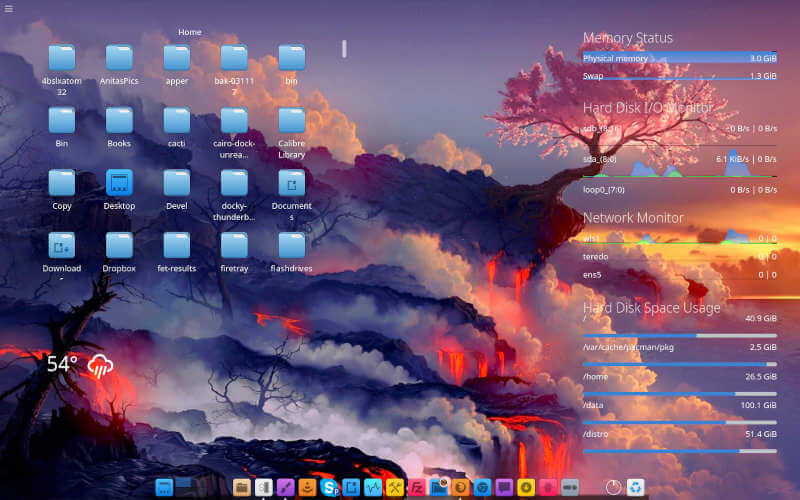
7. Garuda Linux
Garuda Linux is a rolling release distro based on Arch Linux. It features a beautiful UI and memory-friendliness thanks to its focus on performance. Garuda Linux uses the Calamares installer so setting up your workstation will be a breeze.
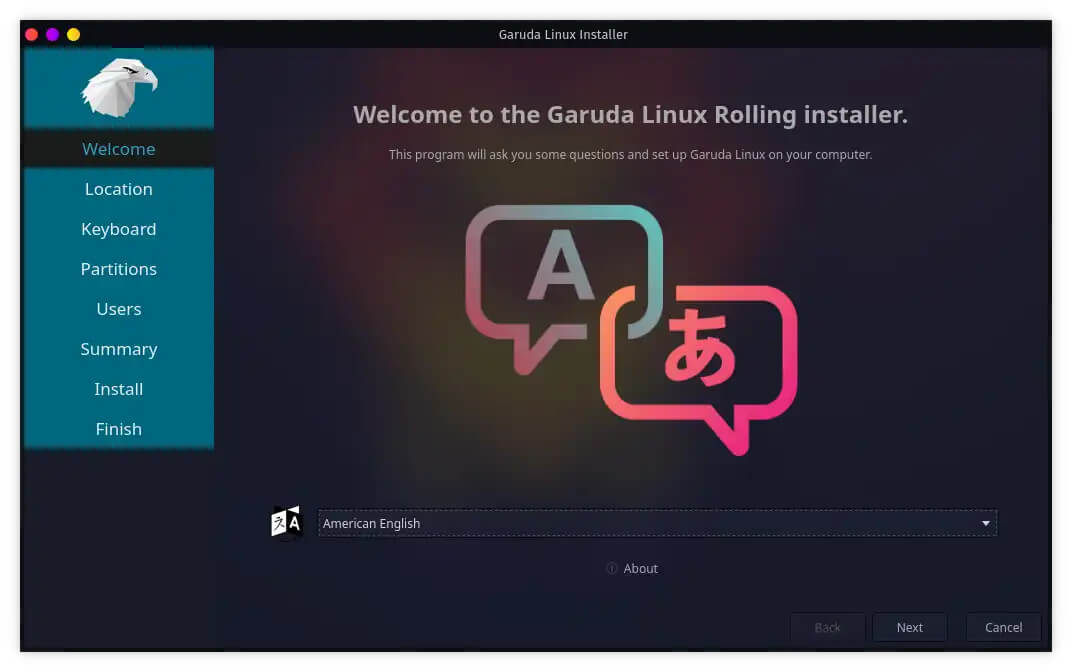
8. EndeavourOS
EndeavourOS is a terminal-centric Arch Linux-based distro powered by a vibrant and friendly community at its core. Its purpose is to reveal the flexibility inherent in the Arch-based core to users as they go on their Linux journey.
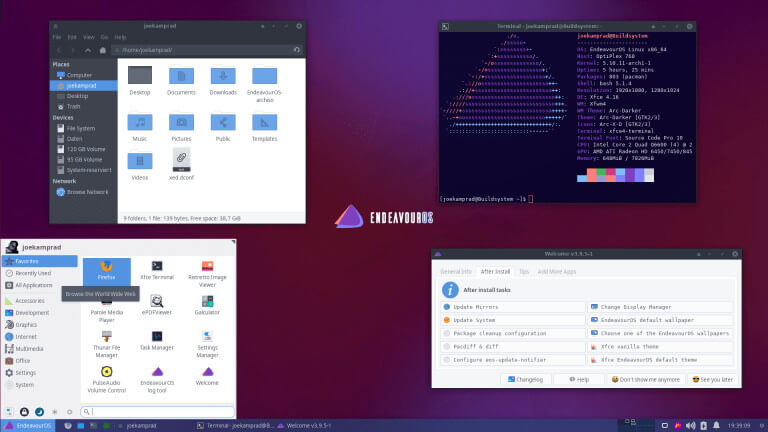
9. Artix Linux
Artix Linux is an Arch Linux-based rolling distro. It uses runit, s6, or OpenRC as init because PID1 has to be simple, secure, and stable.
Artix Linux offers different installation options. One of them uses the Calamares GUI installer which will enable you to get up and running in no time.
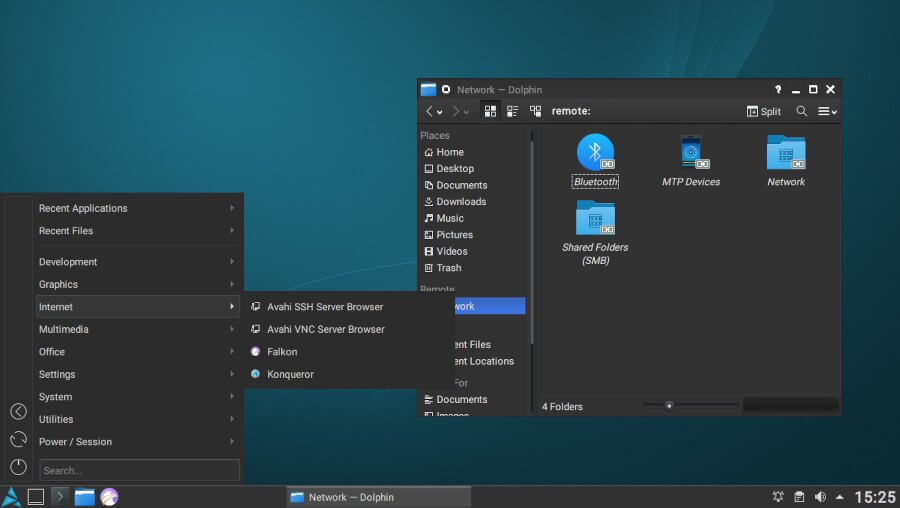
10. Archman Linux
Archman Linux is an Arch Linux-based rolling distribution built with a focus on power, speed, stability, and aesthetics. It exists to always provide users with up-to-date packages as well as provide unlimited access to all the customization features Linux has to provide starting from the several desktop environment options to testing the latest releases and packages before committing to installing them.
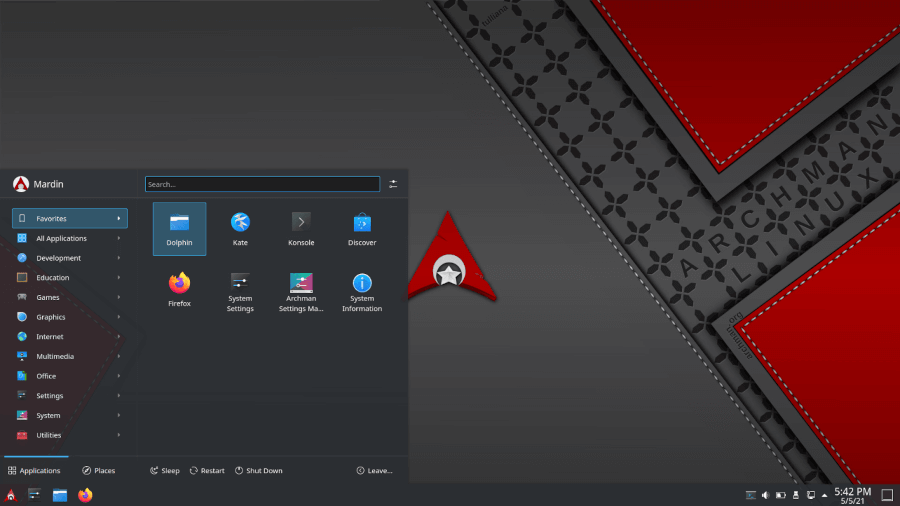
Conclusion
There are several common factors in all the above-mentioned distros. User-friendliness, customizability, beautiful aesthetic design, benefits of the Arch User Repository and the Arch Wiki, a welcoming community, documentation, tutorials, etc. One thing that will make one distro significantly stand out over the others is your list of requirements and I hope this list is helpful.
What distribution are you rocking right now? Have you come to a conclusion on your Arch-based distro of choice? Or perhaps there are other top-notch Arch Linux-based distributions we should know about. Share your experience with us in the comments section below.


